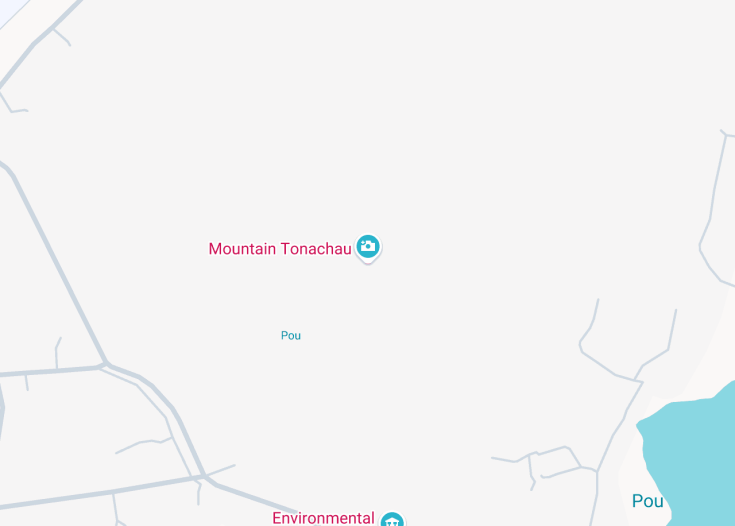Nestled on Weno Island in Chuuk State, Micronesia, Mountain Tonachau stands as a majestic landmark visible from almost any point on the island. This limestone peak is not only a natural spectacle but also steeped in rich cultural significance, linked to local legends and historical sites.
Hiking to its summit offers panoramic views of the lush landscapes and sparkling blue waters that surround Chuuk Lagoon. The journey to the top, though rigorous, rewards adventurers with breathtaking vistas and a deeper appreciation of Chuuk’s pristine beauty.
Before embarking on the hike, check local weather conditions and ensure you have adequate water and sun protection. The trail can be quite steep and exposed.
Pack light but include essentials like snacks, a camera, and binoculars to fully enjoy the scenic views and wildlife you might encounter on your hike.
Exploring Mountain Tonachau: A Majestic Landmark
Mountain Tonachau stands as a beacon on Weno, the largest island in Chuuk State, part of the Federated States of Micronesia. This mountain isn’t just a natural wonder; it’s steeped in cultural significance and local legend, making it a compelling destination for tourists. For enthusiasts of history and nature alike, Mountain Tonachau offers a splendid vista that overlooks the famous Chuuk Lagoon, known for its world-class diving sites and wartime relics submerged beneath the waves.
Hikers and adventure-seekers are rewarded with panoramic views of the lagoon and the dense tropical forest that surrounds the area. The journey to the summit is as thrilling as the destination itself, featuring rugged paths and the vibrant biodiversity of Micronesia. Whether you’re a seasoned hiker looking for your next challenge or a history buff keen to learn about local lore and wartime stories, Mountain Tonachau promises an enriching experience filled with beauty and intrigue.
Activities and Attractions at Mountain Tonachau
Hiking to the summit of Mountain Tonachau is a popular activity, offering not only physical challenge but also the opportunity to immerse oneself in the serene beauty of Micronesia’s natural environment. Along the way, hikers can witness an array of flora and fauna, including some species unique to the island.
For those interested in photography or bird watching, the mountainside provides many opportunities to capture stunning wildlife photos or observe rare birds in their natural habitat.
Additionally, the summit offers a historically rich site where local legends and wartime tales come to life, making it an educational experience as much as a physical one. It is a location where physical endeavor meets historical exploration, making each visit both enriching and memorable.
A View into History: Wartime Relics
One of the intriguing aspects of Mountain Tonachau is its view over the Chuuk Lagoon, an area known for its sunken wartime wrecks. These remnants from World War II provide a haunting glimpse into the past, making the mountain not just a scenic hiking spot but also a portal to historical reflection.
Many of these wrecks are visible from the summit, lying submerged in the crystal-clear waters of the lagoon below, offering visitors an evocative visual experience that complements the verbal stories of battles and strategic operations during the war. This combination of natural beauty and historical significance makes Mountain Tonachau a unique destination that bridges the natural and historical worlds.
Discover the wonders of mountain tonachau
Perfect for every type of traveler, from families with children to adventure-seekers, Mountain Tonachau offers a diverse range of activities and breathtaking landscapes. Whether you’re looking for a tranquil escape or an exhilarating outdoor adventure, this destination caters to all. Visitors can expect a splendid array of nature trails, rich wildlife, and panoramic views that promise memorable experiences with every visit.
Best time to visit mountain tonachau
Mountain Tonachau is a year-round destination, but the best time to visit is between March and May. During these months, the weather is ideally suited for hiking and other outdoor activities, as temperatures are comfortable and the natural scenery is at its peak.
Annual Mountain Festival
The Annual Mountain Festival in April is perhaps the best time to visit. This event features local crafts, music, food stalls, and guided nature walks.
Accessibility and limitations
While Mountain Tonachau aims to be accessible to everyone, there are some natural limitations due to its geographic nature.
Accessibility
Limitations
- No pets allowed to preserve wildlife
- Drone flying is restricted to protect the natural environment
- Limited cell phone coverage across the mountain
Notes to visitors
- Wear appropriate footwear for rugged terrain
- Carry water and snacks, as facilities are sparse
General information
Details for your visit to Mountain Tonachau
Location
Nestled near major trails and natural reserves, Mountain Tonachau is easily recognizable by its distinct silhouette against the skyline.
Address:
123 Mountain Trail, Natural Reserve Area, Tonachau, Weno.
Opening hours
Monday to Sunday: 6:00 AM – 7:00 PM
Closed on major public holidays.
Best ways to reach mountain tonachau
Car
Mountain Tonachau is best accessed by car, with ample parking available for visitors.
| Route | Distance | Travel time |
|---|---|---|
| From Capital City | 50 miles (80Km) | 1 hour |
| From Riverside Town | 35 miles (56Km) | 45 minutes |
Bus
Buses run daily from Capital City and Riverside Town. The journey offers scenic views of the countryside.
From Capital City: 1.5 hours
From Riverside Town: 1 hour
Nearby Attractions
List of attractions around Mountain Tonachau:
- Lakeview Park – 2 miles (3.2 km)
- Echo Valley – 4 miles (6.4 km)
- Riverside Campgrounds – 5 miles (8 km)
- Birdwatch Sanctuary – 7 miles (11.3 km)
- Old Mill Historical Site – 7.5 miles (12 km)
- Canyon View Bridge – 8 miles (12.9 km)
- Rocky Ridge Trail – 9 miles (14.5 km)
- Whispering Pine Forest – 10 miles (16 km)
Common questions
What is the best time of year to climb Mountain Tonachau in Micronesia?
What types of wildlife can I expect to see near Mountain Tonachau?
Are there guided tours available for Mountain Tonachau?
What should I bring when hiking Mountain Tonachau?
- Comfortable, sturdy hiking boots.
- Plenty of water to stay hydrated, especially under the hot sun.
- High-energy snacks.
- Sunscreen and a hat to protect against the sun.
- A raincoat or poncho, just in case there’s unexpected rain.
- Bug repellent to ward off insects.
- A camera or binoculars for wildlife and scenic views.
Proper preparation will ensure a safer and more enjoyable hiking experience.
How difficult is the hike to the top of Mountain Tonachau?
Are there any cultural sites near Mountain Tonachau?
What are the safety considerations when climbing Mountain Tonachau?
- Always stay on marked trails to avoid getting lost.
- Carry enough water and snacks for energy and hydration.
- Inform someone of your hiking plan and expected return time.
- Check weather forecasts before heading out to avoid getting caught in bad weather.
- Consider hiring a local guide if unfamiliar with the area.
Adhering to these safety tips can help ensure a safe and enjoyable hiking experience.
Can I camp overnight on Mountain Tonachau?
What sort of flora will I find on Mountain Tonachau?
Is there mobile network coverage on Mountain Tonachau?
Are there restroom facilities available on Mountain Tonachau?
What are the local regulations for hiking on Mountain Tonachau?

Is Mountain Tonachau in Weno worth visiting?
Mountain Tonachau, located in Weno, offers a unique but not extraordinary experience. While it boasts scenic views that could be captivating for some, it does not stand out significantly when compared to other renowned mountain destinations. The accessibility might pose a challenge, potentially deterring those who prefer more convenient tourist spots. Moreover, amenities around the mountain are minimal, which might not appeal to visitors seeking a comfortable and facilitated trekking experience.
For avid hikers looking for rigorous trekking, Mountain Tonachau could provide a satisfying journey. However, for the average tourist, it may lack essential attractions and facilities that enrich a visitor’s experience. The decision to visit should depend on personal preference for adventure and solitude over conventional touristic engagement.










